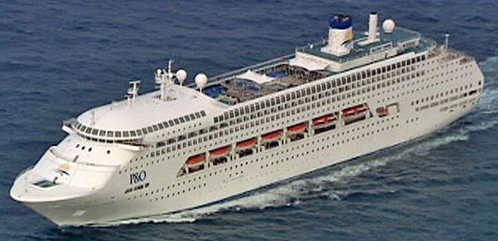Much could be learned about the spread of Swine Flu from the spread of the disease on the Pacific Dawn, which recently berthed in Sydney. For some reason the public health officials let passengers leave the ship and fly all over Australia. To me it would have been prudent to quarantine the whole ship (around 2600 people) and bring everyone ashore and house them in somewhere without ducted central airconditioning, to limit the spread of the disease amongst passengers.

The main guideline in Australia on Pandemic Influenza is
- Office of Health Protection (2006). Interim Infection Control Guidelines for Pandemic Influenza in Healthcare and Community Settings. Canberra, Australian Government Department of Health and Ageing.
They note
- The relative contribution and clinical importance of the different modes of influenza transmission [droplet, contact and airborne aerosols] are currently unknown. However, the epidemiologic patterns observed is generally consistent with spread through close contact i.e. exposure to large respiratory droplets, direct contact or near-range exposure to aerosols. While some observational and animal studies support airborne transmission through small particle aerosols, there is little evidence of airborne transmission over long distances or [? for longer] prolonger periods of time…
- Surgical masks do not protect the wearer from pathogens that are transmitted via the airborne [aerosol] route, but are used to protect the wearer from contact or droplet contamination of the nasal or oral mucosa
Many recent papers indicate the importance of aerosols in the spread on influenza, which would mean that air conditioning systems in offices, hospitals and other public buildings would become very risky places to work if the pandemic hits with gusto. An obvious reduction in risk would be to switch ducted air conditioning stem sto single pass rather than recirculate air. this would increase air conditioning costs by a factor of three. The paper:
- Christenson, B., G. Lidin-Janson, et al. (1987). “Outbreak of respiratory illness on board a ship cruising to ports in southern Europe and northern Africa.” J Infect 14(3): 247-54.
notes “A steep rise in the epidemic curve the day after the air-conditioning was switched on...”
It should be possible to use the ship as a test laboratory to better determine the relative importance of spread by droplets, contact and airborne aerosols by interviewing the passengers. Information like where they slept and ate would be easy to get and would tell a lot about the degree of interaction of infected passengers and from that the likely route of infection. It would be enormously important in formulating public policy worldwide.
If the aerosol route is as important as I think it is, then I predict a very rapid spread in people who work or stay in buildings with ducted central air conditioning systems that are not switched to 100% fresh air.
I hope I am wrong.
